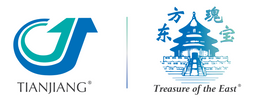Wildlife Protection in Traditional Chinese Medicine (Video Included)
As proud members of the Coalition for Wildlife Protection in Traditional Chinese Medicine, our commitment to preserving endangered species and promoting sustainable practices is steadfast. Recently, I had the honor of participating in the Coalition's planning meeting and of speaking at the 2nd Annual Wildlife Protection in TCM Conference.
What is the Coalition for Wildlife Protection in Traditional Chinese Medicine?
The Coalition for Wildlife Protection in Traditional Chinese Medicine is a collective of organizations and experts dedicated to ensuring the strength of the TCM practice and community though the protection of wildlife in TCM. The Coalition is led by Dr. Yemeng Chen and Dr. Lixing Lao, and is comprised of 30 organizations including schools, TCM associations, and herbal suppliers. By advocating for the conservation of endangered species and promoting the sustainable sourcing of ingredients, the Coalition aims to protect biodiversity and preserve traditional healing practices.
As a member of the Coalition since the Inaugural Conference in 2022, we are helping to popularize TCM best practices regarding wildlife. Our participation in the planning meeting allowed us to collaborate with other stakeholders and experts from across the US, China, Vietnam, and the Philippines to address key issues and drive positive change globally.
The 2nd Annual Wildlife Protection in TCM Conference
The 2nd Annual Wildlife Protection in TCM Conference was hosted by The New York College of Traditional Chinese Medicine on April 24, 2024. We had the opportunity to share our insights alongside TCM practitioners and researchers, industry professionals, and conservationists.

In the panel of researchers, manufacturers, and distributors, I shared that TCM practitioners have a choice, not only between sustainable versus non-sustainable herbal products, but also in herbal suppliers. Suppliers vary dramatically in their sourcing practices, transparency, and adherence to national and international standards.
While it's often hard to discern the difference between herb suppliers, I hope the following questions may help practitioners make informed decisions:
- Are the herbs grown in their Dao Di? Are the herbs grown with regenerative farming practices?
- Are the herbs directly sourced from the farms or do they come from wholesale herb markets?
- Are the farms compliant with WHO's Good Agriculture and Collection Practices (GACP)?
- Are Convention on International Trade in Endangered Species of Wild Fauna and Flora (CITES) certificates available for an protected herbal products to ensure they were sustainably cultivated rather than foraged from wild sources?
- Are the herbs compliant with China's Good Manufacturing Practices (GMP) for Pharmaceuticals or for Food?
- Are the herbs compliant with the latest version of the Chinese Pharmacopeia (2020 Ed.)?
- Are the manufacturing facilities certified to International Standards Organization (ISO) standards for Quality Management (9001), Environmental Management (14001), and Occupational Health & Safety (45001)?
These questions address wildlife protection and factors impacting herb quality and clinical efficacy, both of which are critical to the strength and sustainability of Chinese Medicine.

My other key takeaways from the conference are as follows:
- Products from protected wildlife are not now and were never historically critical to TCM practice. They were only used very sporadically during the history of Chinese medicine, and only in extremely dire cases, for which modern emergency medicine offers now offers better alternatives.
- A tremendous body of research in Asia shows that plant-based herbs and acupuncture are as effective or more effective compared to products derived from protected wildlife. A list of plant-based alternatives can be found online: https://tawap.org/
- Synthetic chemical constituents of protected wildlife products are already in wide use. For example, Ursodiol is a bile acid first found in the bile of bears (genus Ursus) that is now produced from cholic acid and used widely in the treatment of liver disease.
- The TCM profession is blamed for the poaching of protected wildlife species; whether this is fair or not, as members of the TCM community, we must take a vocal stance for the protection of protected species if we wish to conserve wildlife and we wish for the wider adoption of our medicine.
Conference Program and Recording
The program and the video for the conference are linked below:
Passcode: +%8PqMh?
Further resources, including research summaries, can be found on the Coalition's website: https://www.wildlifeprotectionintcm.com/resources/ .

By highlighting the importance of sustainable sourcing and responsible consumption, we aim to raise awareness and inspire action towards wildlife protection. Through our involvement in the Coalition for Wildlife Protection in Traditional Chinese Medicine, we are committed to upholding the values of conservation, sustainability, and ethical practices. Together, we can make a difference in preserving our planet's biodiversity while ensuring a bright and harmonious future for traditional healing practices.



















